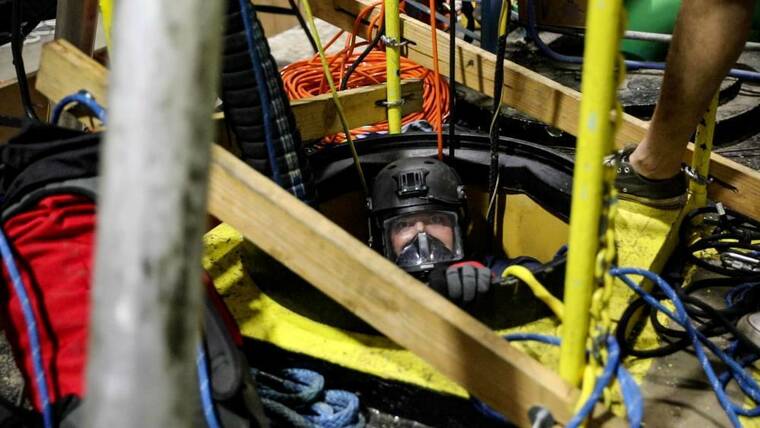HONOLULU — U.S. Navy divers are trying to remove jet fuel from a water shaft near Hawaii’s Pearl Harbor after people using the water in their homes reported becoming sick.
Divers are making progress and are now “skimming” contaminants that floated to the surface, the Honolulu Star-Advertiser reported Monday.
“It’s the beginning stages, we’ll have to see where the Navy’s gonna go next. But at least we’re assessing how well we can start skimming,” said Chief Warrant Officer Jose Castilla, commander of Mobile Diving and Salvage Company 1-8.
The water supply serves about 93,000 people.
Navy officials believe about 14,000 gallons (52,995 liters) of jet fuel spilled at the Red Hill Bulk Fuel Storage Facility inside an access tunnel that provides fire suppression and service lines for the complex.
People using the Navy’s water in and near the Pearl Harbor military installation reported becoming ill, and the Navy has moved more than 3,000 families off base into Oahu hotels.
A Navy official told state lawmakers last week that the Navy does not believe the contaminated water was caused by a leak from aging underground storage tanks that sit above an aquifer.
When the work began, the Navy dive team had to wear specialized suits to protect them from the hazards in the water. But the suits are bulky and hot and concerns about overheating in the cramped space forced them to change their approach to protect divers.
“Nothing worked really well right off the bat, but we were able to make smattered minor changes in the way we put things together,” said Castilla.
The operation is new to the experienced dive team, which regularly works in difficult underwater situations.
“The logistics, getting all the gear down here, (was) basically trial and error really,” said Petty Officer 2nd Class Reed Akey, a four-year Navy veteran from Mobile, Ala. “Stuff would work; stuff wouldn’t work; having to go back to bring different equipment. See if that would work.”
Removing fuel from the system requires workers to pump contaminates into 20,000-gallon (more than 75,000-liter) tanks. The first tank was nearly full and ready to be taken away by truck as of Sunday night.
“There will be some sampling done to see how efficiently we’re getting enough contaminations for the volume of water that we’re actually pumping,” said Castilla. “If we skim too low, we might just keep getting water and not removing enough contamination.”
The affected Navy shafts have been shut down.
The Board of Water Supply told Hawaii News Now that initial tests showed the nearby Halawa shaft was not contaminated. The Halawa shaft supplies drinking water to a broader area of Honolulu.


